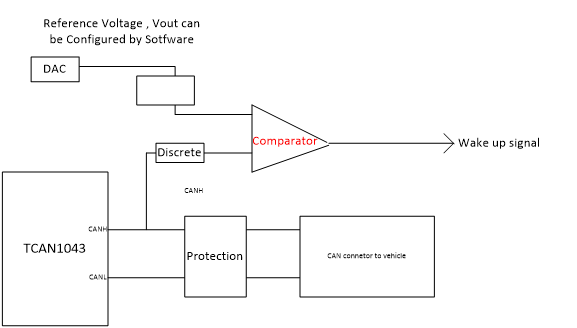Dear team,
My customer has a new demand about the wakeup function. It is required that on CANH or CANL, once there is a DC voltage exceeding a certain threshold, the system should wake up, and the threshold needs to be programmed. Currently we want to use below block diagram to achieve this function, but we are not sure if it is ok? Do you have better ideas?
Thanks & Best Regards,
Sherry


